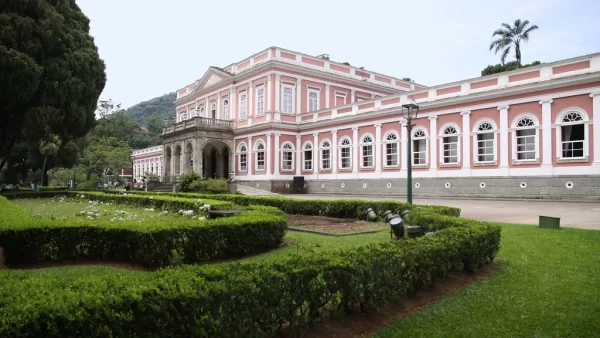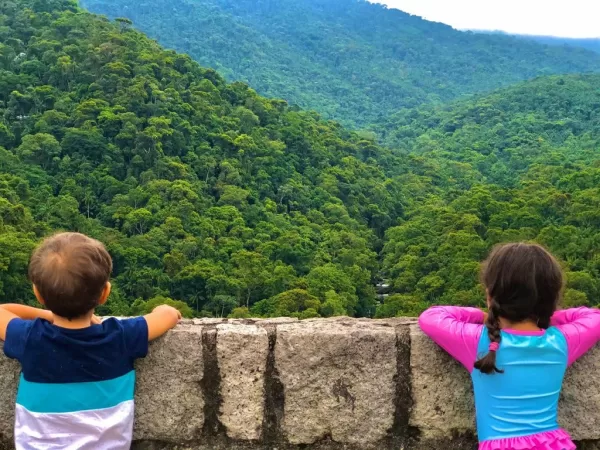Rio de Janeiro is a fascinating town known worldwide for its rich culture and natural beauty. However, many don’t know that the city has a lot of history too. Influenced by Portuguese colonists, enslaved Africans, and indigenous natives, Rio is a city full of interesting facts and curious details.
Therefore, read more to learn 14 curious facts about Rio de Janeiro that you probably didn’t know and will fascinate you!
1. The city got its name from a river that is actually a bay.
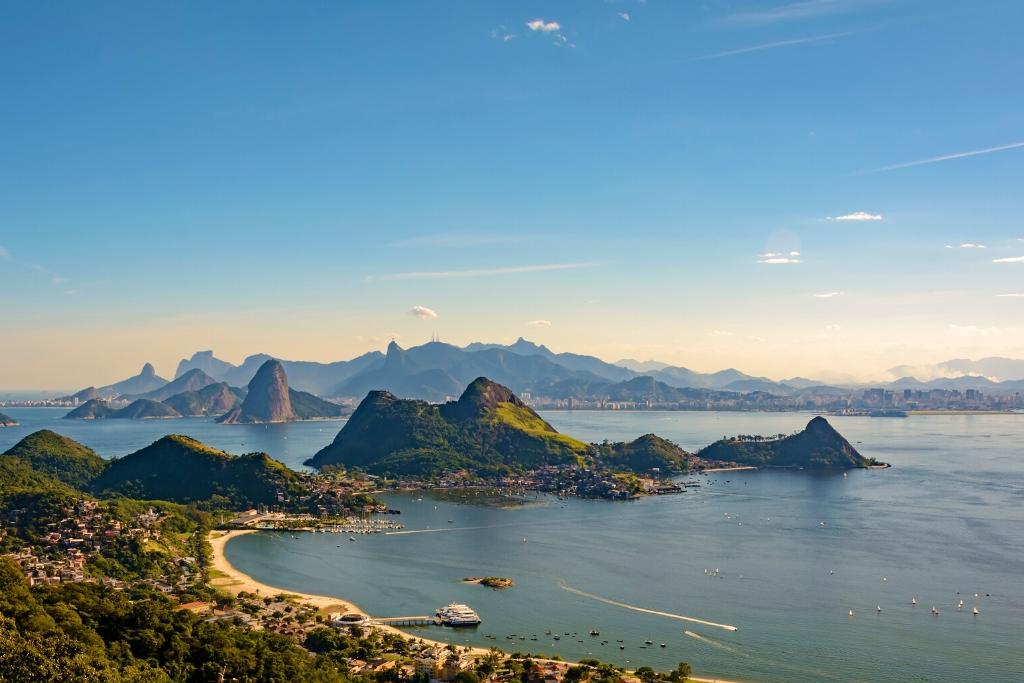
Legend has it that, on the first day of January 1502, when the Portuguese explorer Gaspar de Lemos sight Rio for the first time, he was sailing through Guanabara Bay and mistaken the bay as the mouth of a big river. Consequently, he named the city Rio de Janeiro (January River).
Nowadays, some historians dispute the theory, arguing that the Portuguese were too skilled sailors to commit such a mistake and that the word river was also used to identify bays in the 16th century. Regardless, the name for the city prevailed, and it is how the city is internationally known.
2. "Carioca" is from a native language and means "white man's house."
People who are born and raised in Rio de Janeiro are called Carioca.
The word originates in the term “Kari’Oka,” from the Tupi-Guarani language, used by the indigenous people who inhabited the city before the colonizers arrived. When the Portuguese began to settle in, they built houses made of stone and whitewash that the natives didn’t know until then. They then called “kari’oka,” which comes from the junction of “kara’iwa” (white man) and oka (house), which means “house of the white man.”
Some sources claim that contrary to the above story, the term Carioca referred to the river of the same name. This was the river that supplied fresh water to the population through the Carioca Aqueduct (nowadays Lapa arches).
Regardless, being a Carioca became more than just a gentilic. It is considered a way of life, and many visitors leave the city as Carioca of heart.
–> Learn more: What does carioca mean?
3. Rio was the capital of one of the largest empires in the world
In addition to being the capital of Brazil for two centuries (1763 until 1960), Rio was once the capital of a European country as well! Do you know which one? Portugal, of course!
When Napoleon decided to invade Portugal due to the country’s refusal to adhere to the Continental Blockade, D. João VI transferred the entire court to Brazil, moving to Rio de Janeiro in 1808. The city then became the capital of the Kingdom of Portugal and its vast overseas empire.
With the arrival of the Royal Family, the city underwent significant urban and cultural changes. New roads and pavements were created, palaces, churches, cultural buildings were established, etc. Many of these historic buildings, such as the National Library in Cinelândia, in Rio’s downtown, can be visited today.
–> Book our “Historic Rio Walking Tour“ to get know more about the city’s history.
4. Rio is home to the eighth biggest library in the world
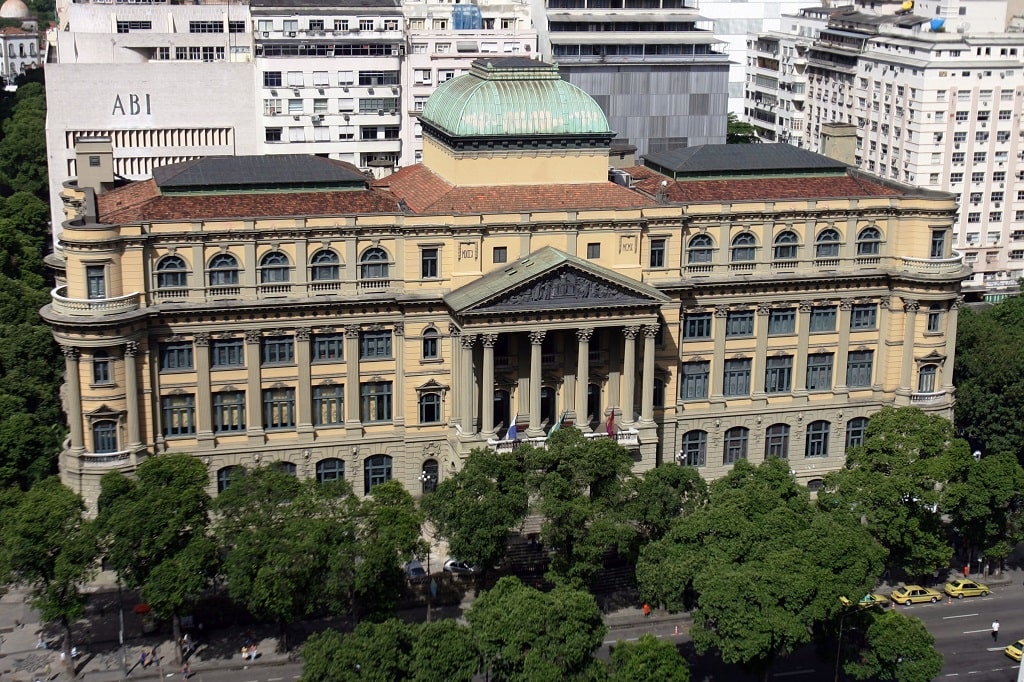
In fact, the history of the creation of the National library is very curious. When Dom João VI resolved to run to Brazil, he decided to bring with him one of Portugal’s most important riches: the Royal Library (Real Biblioteca da Ajuda). At the time, the library had an average collection of 60 thousand pieces.
However, in a rush for leaving, the boxes with books and documents were abandoned at the port, and only in 1810 began to be transferred to Brazil. With the collection brought together again, D. João founded the Royal National Library. During the early years, only scholars were able to consult the library and even so, with royal authorization. Only in 1814, access to the general public was granted.
Currently, the library is the depository of the bibliographic and documentary heritage of Brazil, considered by UNESCO, one of the ten largest national libraries in the world and the largest in Latin America.
5. Rio de Janeiro had the largest slave port in history
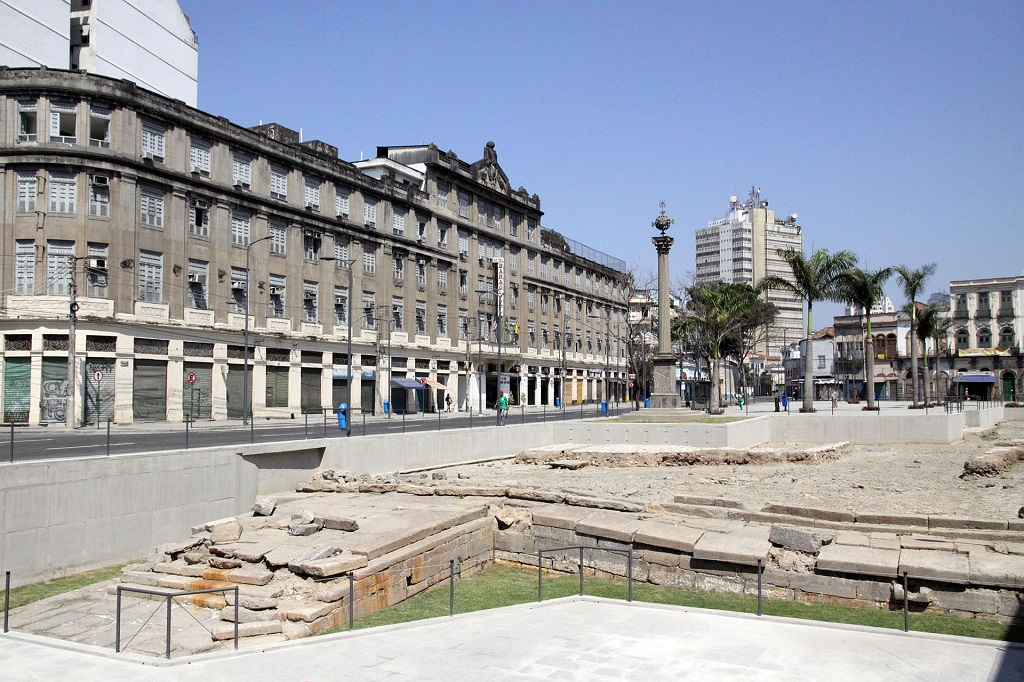
Due to the city’s development by the arrival of the Royal Family in 1811, a pier was built in the city’s port area for the disembarkation and trade of enslaved Africans. During the twenty years of its operation (which ended the ban on the transatlantic slave trade), between 500,000 and one million enslaved people landed on the Cais do Valongo (Valongo Wharf), which made the site the largest slave port in the world.
The archaeological site received the title of a World Heritage Site by UNESCO in 2017 for being the most important physical trace of the arrival of African slaves on the American continent.
–> Book our tour “History of Samba and Carnival Parade Backstage“, to visit this site and learn about the importance of the African heritage to the city.
6 - Samba and Bossa Nova were created in Rio
Between 1850 and 1920, the area around the old pier became a space occupied by blacks from different nations, and the area became known as “Little Africa.” It was there that various artistic and cultural movements of African roots emerged.
It was in one of these cultural manifestations that Samba was created, influenced by African rhythms such as Maxixe and others. In 1916, the musician Donga composed the song “Pelo Telefone” with other musicians. The song was registered and recorded as the first Samba of Brazil.
–> Book our tour “Samba Night Tour with locals in Lapa” to enjoy an authentic samba night in Rio de Janeiro.
Concerning Bossa Nova, it emerged in the city’s south zone in the late 1950s, in small gatherings in apartments of young musicians in Copacabana. They created a new way of singing, more intimate and with a melody similar to Samba but with direct influence from American Jazz.
Due to the worldwide importance of both musical genre and their cultural significance to the city, they are considered Intangible Heritage of Rio de Janeiro.
–> Listen to our playlists Samba and Bossa Nova, on Spotify.
7. Rio's Carnival is the largest Carnival party in the world
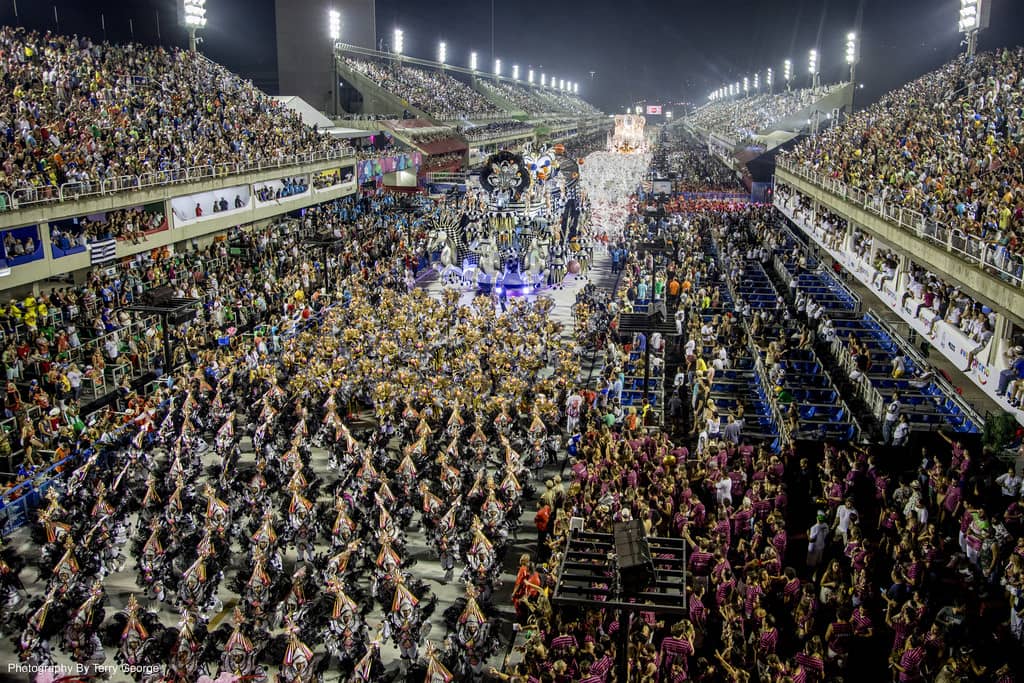
At the end of the 1920s, a new generation of Samba artists emerged and created a new way of playing Samba. They added new instruments, such as the ‘surdo’ and the tambourine, altering the rhythm of it – it became faster and with a drumbeat. From then on, the first samba schools in Brazil were created, and the parades of samba schools began, making Carnival the most significant event in the city and in Brazil.
Every year, in addition to the parades held in Sambadrome for 5 consecutive days, around 5 million people take over the streets of Rio to participate in hundreds of street parties called “blocos de Rua.”
In 2004, the Guinness Book of Records registered that the city’s most illustrious party attracted a record 400,000 foreign visitors, becoming the largest carnival party in the world.
–> Read more: Practical guide to enjoy Carnival.
8. Sugarloaf Mountain was actually an island
One of the most famous landscapes in the city, Pão de açúcar (Sugarloaf Mountain), receives thousands of tourists daily who climb to the top of the hill to enjoy one of the most beautiful views of Rio. But did you know that this mountain was actually an island?
Pão de Açúcar, Urca, and Cara-de-Cão hills used to form a rocky set separate from the mainland – the Trindade Island. Only in 1697 was the landfill that connected the island to the mainland made.
The origin of its name also has several versions. The best-known version is that the Portuguese gave this name to the hill during the heyday of sugar cane cultivation in Brazil (16th and 17th centuries). After the cane was squeezed and the broth boiled and refined, the sugar blocks were placed in a conical clay form to transport it to Europe. This shape was called Sugarloaf, and the similarity of the Carioca cliff with its shape would have given origin to the name.
9. The Sugarloaf Cable Car is the oldest tourist attraction in the city
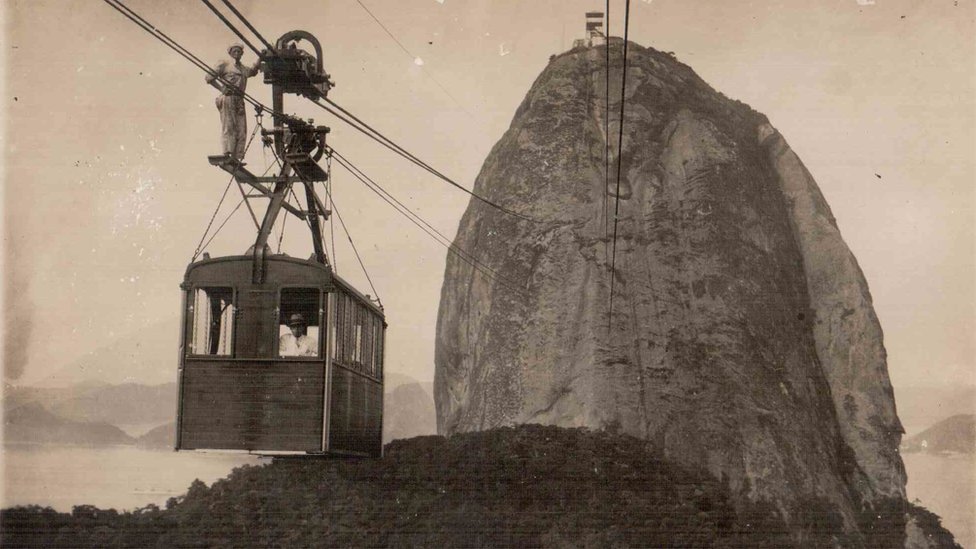
In 1908, while admiring the Urca and Sugarloaf hills, the Brazilian engineer Augusto Ferreira Ramos had the idea of building an aerial path to take people to the top. After creating the project, in the following year, a decree authorizing its construction was published.
Today’s cable car system, known as the Sugarloaf Cable Car, was built by climbers who climbed the mountain one by one, bringing all the equipment in their backpacks.
Its first section was opened in 1912 and transported 577 people who went up to Morro da Urca through what was called “Camarote Carril” at the time. Only in 1969 did the company responsible for the “Bondinho” receive authorization to duplicate the line as we know it today.
The cable car was the third cable car in the world and has served as a backdrop for several films. In 1979, James Bond recorded scenes from the movie “007 against the death rocket”. The famous British agent fought with the villain ‘Jaws’ on the cable car, ultimately destroying Morro da Urca station.
–> Book our tour, “Sugarloaf Hike and Happy Hour with Locals,” to visit this attraction differently and in a local way.
10. Christ the Redeemer statue did not have open arms originally
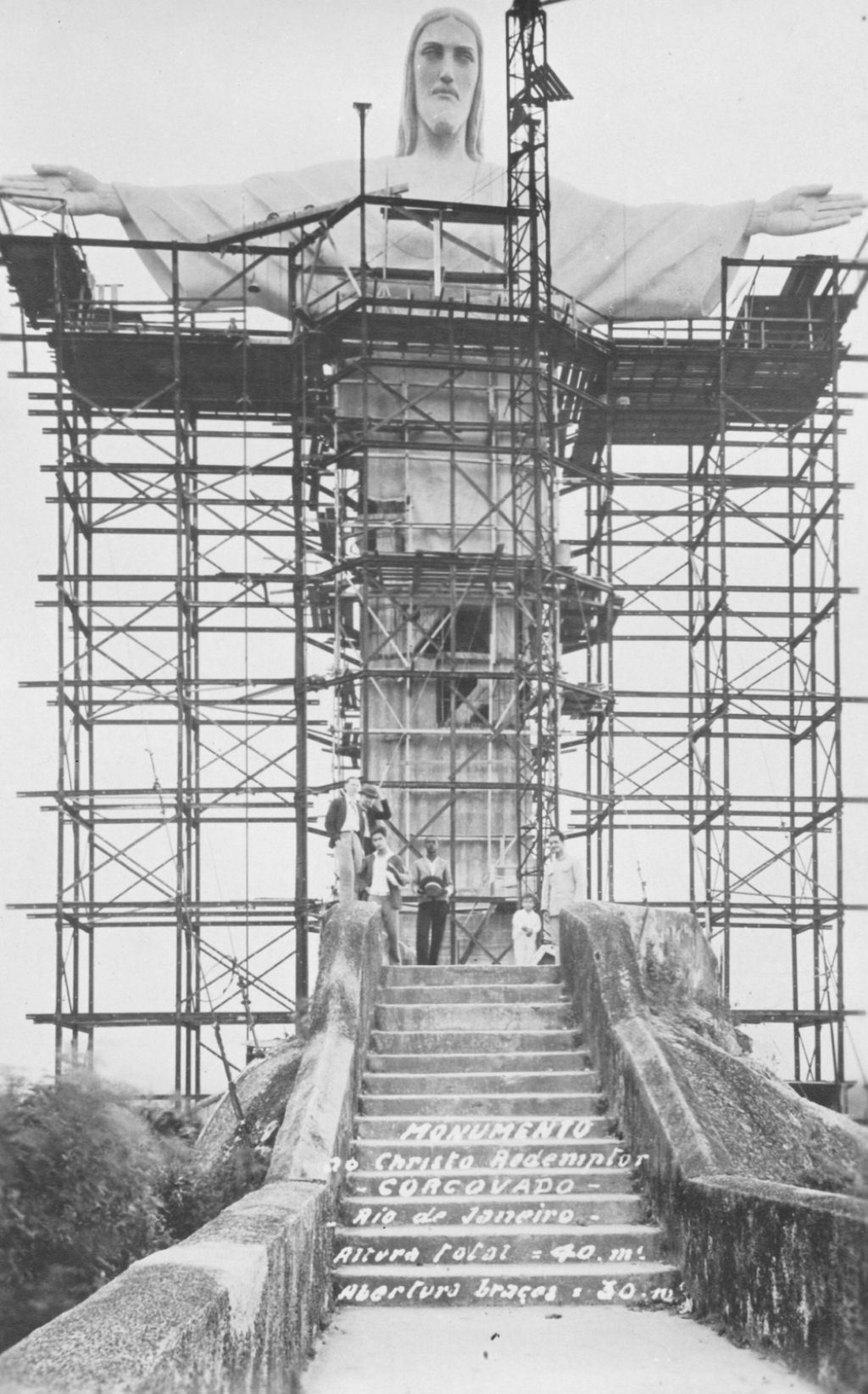
The idea of building the statue of Christ the Redeemer, one of the most significant symbols of Rio and Brazil, arose in 1859 by the French priest Pierre-Marie Boss. He suggested to Princess Isabel that a religious monument be erected at the top of Corcovado Hill. Despite the princess’s approval, the project only became a reality in 1922, during the Centenary of Brazil’s Independence celebrations.
The 38 meters-high and over a thousand tons statue was created by 3 people: The engineer Heitor da Silva Costa did the first project, the plastic artist Carlos Oswald took care of the final design, and the French sculptor Paul Landowski modeled the pieces that make up the statue.
However, according to the original project, Christ should hold the globe in one hand and a cross in the other. However, the idea of doing it with open arms fell in favor of the Carioca population and prevailed.
The statue came from France to Brazil in pieces. The head alone consisted of 50 pieces, and each hand was 3.2 meters long. The first part to be completed was the head. Christ, therefore, appeared from top to bottom. All the pieces on the outside were covered with soapstone tiles, a material that, despite being easily scratched, resists weather and temperature variations well.
Inaugurated in 1931 as a tribute to Rio’s 100th anniversary, the Christ statue is the largest Art Deco statue in the world. 2007, it was elected one of the New 7 Wonders of the World, alongside masterpieces like the Roman Colosseum and the Taj Mahal.
In 2012, UNESCO considered Christ the Redeemer as part of the Rio de Janeiro landscape included in the list of World Heritage Sites.
–> Read more: How to visit Christ the Redeemer.
11. Maracanã Stadium held the world's biggest football match
This is not an episode we like to recall, but 16 July 1950 was a historic day in Rio. Brazil was playing against Uruguay in the final match of the fourth edition of the FIFA Soccer World Cup at Maracanã Stadium. It was built especially for the occasion, and, at the time, it was the biggest stadium in the world.
Almost 200 thousand people (173,850 paid spectators and an estimated 20,000 freeloaders) went to Maracanã to watch the match marked in history by the number of spectators and the result. Uruguay beat Brazil by 2×1, and the silence of the dozens of thousands was so loud that they gave it a name: Maracanazo.
–> Book our Soccer Tour: Maracanã Stadium + Flamengo Museum to have access to the biggest stadium in Brazil
12. Three famous beach sports were invented in Rio
Soccer is with no doubt the national sport in Brazil, but many people don’t know that Rio is also famous for being the place were three beach sports were invented.
With an extensive waterfront and summer climate all year round, we usually say that the beach is our “backyard.” Plus, practicing sports – especially at the beach, is part of the routine and lifestyle of all Cariocas. Therefore, from our passion for the beach and sports, in the 50s and 60s, three beach sports were born on the sands of our beaches: frescobol (or beach tennis), footvolley, and altinha.
Frescobol was created in the ’50s at Copacabana beach by the architect Caio Rubens Romero Lyra, who used to play beach tennis with his friends on the beach and one day decided to replace his tennis rackets (that were being destroyed by the salt air) by wooden ones.
About footvolley, it was born from another sport created in Rio, the altinha. One day, Cariocas playing altinha by the sea (a game where the ball can’t drop) were banned by the police for breaking a law of the time. The group then decided to continue the match on a volleyball court with a sand-mounted net and bounded field, which was permitted. Thus was born footvolley, a combination of football and volleyball, two sports that every Brazilian loves.
–> Read more: 5 most practiced sports on the beaches of Rio de Janeiro.
13. Rio has more than 750 slums
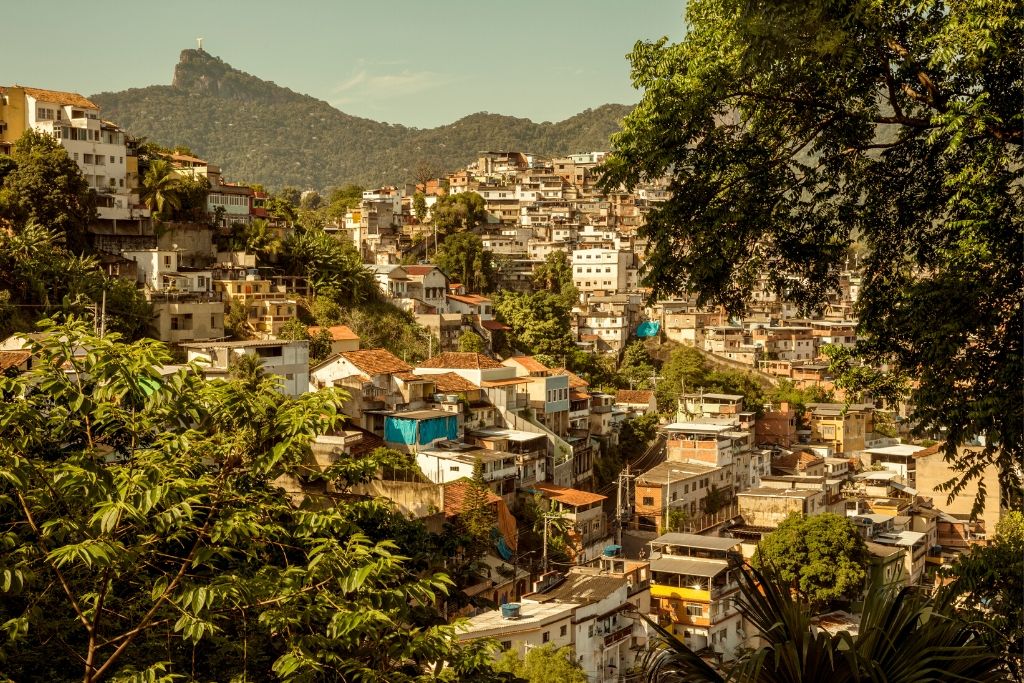
As striking as Christ the Redeemer or Sugarloaf Mountain in the Rio de Janeiro landscape, the favelas are spread across most of Rio’s hills.
According to data from the last census conducted in the country (2010), there are 160 urbanized neighborhoods and 763 slums in which more than 1.3 million people live (almost a quarter of the city’s population). These data make Rio the city with the largest number of people living in slums across Brazil. To give you an idea, if all favela residents in Rio de Janeiro formed a separate city, it would still be the 12th largest city in population.
Rocinha is the largest favela in town and the second largest in Latin America. It is located in the South Zone between the São Conrado and Gávea neighborhoods. Although Rocinha is officially classified as a district, many still refer to it as a favela.
–> Would you like to know Rocinha with a local guide? Book our Carioca experience “Rocinha walking tour”.
14. Rio has a clock tower bigger than Big Ben
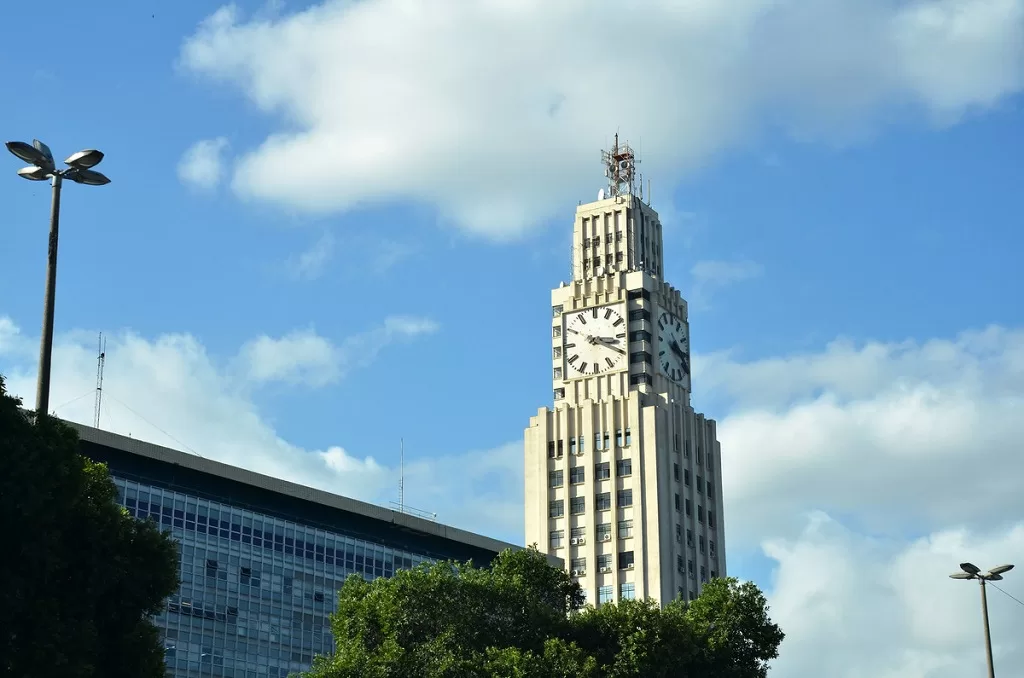
Right in the middle of the central region of the city of Rio de Janeiro, is the largest and one of the most imposing four-sided analog clocks in the world: the Central do Brasil clock.
The clock, inspired by the art deco art movement, was inaugurated in the 1940s and is still a reference for those who circulate along with Avenida Presidente Vargas, in downtown Rio. It is located at the city’s central train and metro station.
The monument is bigger than another famous clock, London’s Big Ben, in England. The English specimen measures seven meters, while the Brazilian is 10 meters high on each side. At 135 meters high, the building was once the tallest reinforced concrete structure in the world.
–> Read more: Public transport guide.
Did you like this curious facts about Rio de Janeiro? Our city still has many interesting facts unknown to most of its visitors. Therefore, getting to know the city with a local guide will make all the difference on your trip.
Our local experts can help you make your trip to Rio de Janeiro unforgettable!
If you need assistance in planning your visit or would like to have a customized itinerary for your trip, get in contact with us!
Would you like to have unique and authentic experiences and know the places that only Cariocas know? Have a look at our unique and customized local experiences and explore Rio de Janeiro like a local.
Are you looking for a place to stay in Rio de Janeiro? Check out our post Where to stay in Rio de Janeiro and book your hotel here.
